Sexing Racing Pigeons
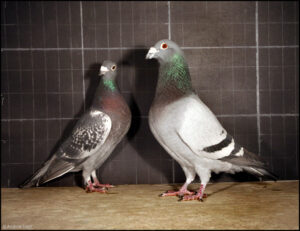 Let me get this out of the way here first I am not an writer by trade, this will be a listing of statements, facts and observations on the many ways of telling the gender of homing pigeons. This is by no means the complete listing of gender facts as there are I am sure many displays by both the cock and hen that are not understood by us ground bound featherless creatures. Many of the items listed here are taken from various books and some I have learned by observing my birds and some things I got from talking to old timers about the habits of homers. The first part of this article is devoted to the gender displays while the second half is devoted to the actual act of mating.
Let me get this out of the way here first I am not an writer by trade, this will be a listing of statements, facts and observations on the many ways of telling the gender of homing pigeons. This is by no means the complete listing of gender facts as there are I am sure many displays by both the cock and hen that are not understood by us ground bound featherless creatures. Many of the items listed here are taken from various books and some I have learned by observing my birds and some things I got from talking to old timers about the habits of homers. The first part of this article is devoted to the gender displays while the second half is devoted to the actual act of mating.
In the world wars many pigeons were used for the purpose of communications by troops and birds were responsible for saving more that a few lives. One bird that was well decorated during the 1st World war was Cher Ami; during one encounter this cock bird covered a distance of 40 KM in 25 minutes. This equals out to about a mile a minute or 60MPH .The bird’s message capsule was attached to the leg, which was hanging by a few shreds of sinew and the bird had a wound to the breast. He delivered his message and saved the members of “The Lost Battalion”. Cher Ami is now on display in the Smithsonian institute in Washington D.C. It was discovered after the bird’s death to be a hen. I bring this up to show that even the bird Experts can’t tell the gender in some cases. I do know that the birds will tell us if we watch them. With this in mind I will list the various signs of gender that one can observe in the loft.
Observation Sexing
Cock birds.
- A. Make note that most cock birds are bigger in statue and have for the most part a bigger head.
- B. By looking at the tail of the cock you will see it has been drug on the floor of the loft or ground and will be dirty.
- C. Will run the hen by this I mean that he tries to get the hen back to the nest and will run her all over the loft or when they are outside will run her all over the ground or roof of the loft. He is the one in the back.
- D. Tend to peck at the hen to gain her attention; this usually takes the appearance of light pecking to get her attention and is not a deliberate pecking to cause injury.
- E. Do a dance which consists of but is not restricted to walking in a figure eight pattern, ducking the head or bowing and spinning in a circle.
- F. Will emit a low growling noise and in general seem to argue with the hen.
- G. Will peck at the underside of the wing by reaching back over their side and lifting the wing.
- H. Will run or charge at the hens in an attempt to intimidate them.
- I. Will sit in a nesting place and call to the hen.
- J. Provide the nesting material by bringing it to the hen and offering it to make a nest.
- K. Will chose a nest place and then bow down and call to the hen and beckon her to come to him.
- L. Are more aggressive.
- M. Eyes are not as round as a hen’s.
- N. Take the nest in the late mornings relieving the hens to eat and catnap in the sun.
Hen Birds
- A. Are smaller in stature and features.
- B. Tend to the nest duties at night.
- C. Have more space between the vent bones
- D. Are more timid
- E. Will attempt to feed the cock bird by sticking her beak into the cocks Beak
- F. Will go to the cocks chosen nest site and kneel down positioning herself into the mating stance.
- G. Tend to have rounder eyes I am talking about the cere being rounder in the corners.
- H. Is the bird in front during the “chase”
- I. Seldom make any sounds.
- J. Are normally cleaner.
- K. Is the one that lays eggs?
- L. Is usually the one that grooms the cock bird by lightly pecking around the eyes, ears and head?
- M. Is more dainty when drinking I mean she will only stick part of her beak into the water where as a cock will gulp with whole beak in the water ….
It is worthy of note here that on any given day or time that Hens and cocks will imitate each other so it is possible to see a hen for instance carrying nesting material to the nest and or the cock bird sit the nest during the night.
Here are some different sexing techniques that I have read of and I am sure there are many more. As to the validity of these methods you will have to use your own thoughts to come to an acceptable conclusion. Note that I didn’t use the ones that take strings and wires along with jumping over a broom stick in the full of the moon while singing swannnnnie how I love you… etc!!!!
Vent Sexing
This is taken from the book “The Pigeon ” written by Wendel M Levi and is in reference to Sexing of squabs at the age of hatching to fledging (23rd or 24th day). It is given to us by Mr. Iwata of Japan. The palmeto pigeon plant of South Carolina didn’t have much success with it. It is a complex system and takes some studying and trying to master.
By observing the vent (cloaca opening) from the side we see in the male, the upper border is seen to be protruding, covering the lower the lower, while in the female this is not the case, the lower border protruding more than the upper. By looking at it from behind, we recognize that the slit is curved downward, with the dorsal concave and the ventral convex and with both ends turned upwards. The opening in the female is quite the opposite of that of the male it’s concave margin looking downward and with the ends turned downwards. Moreover in the female the slit is situated somewhat dorsal to the entire region, the portion lying ventral to the slit being more developed than that of the dorsal.
This the same system used by poultry growers to sex chicks before shipment…. After the death of a bird I clip the feathers from the vent and check for the position and shape. I then continue with an autopsy and determine the sex of the bird and have found it to be about 70% correct…meaning that in over 70% of the birds I have done autopsy on I was able to predict the gender…
Toe Method
The object that makes this critical is how you bring the toes up to examine Them. I have found that I allow the center toe to lay in its natural position and then I very carefully bring the 2 outside toes up to lay directly next to the center toe. If you force the toes one direction or another, you can make Them read whatever you want so a bit of practice is necessary to learn the Proper method. It is as most have said with the male pigeons having a difference in the length of the toes whereas the hens are generally equal. I attribute this to nature so The males can position their self properly when mating. The hens have no need To be able to hook onto anything so their toes can be equal and may work as a stabilizing effect. Can’t really say for sure about that.
I hope this helps you to understand complex task of sexing pigeons . I have talked to many old –timers. I heard one of them say with a gleam in his eye “yeah I had one of my favorite cock birds lay two eggs last year” ha ha ha so ya just never know and hey ! the birds don’t have a problem knowing who is who . ……..Lee
Sexing Racing Pigeons by: Lee of The Pigeon Talk Forum
pigeon racing, racing pigeon, racing pigeons, race pigeon, race pigeons, racing homer, racing homers, pigeons racing, pigeon, pigeons, homing pigeons, homing pigeon, pigeons for sale, pigeon auction, pigeon forum, pigeon racing pigeon, pigeon racing pigeons

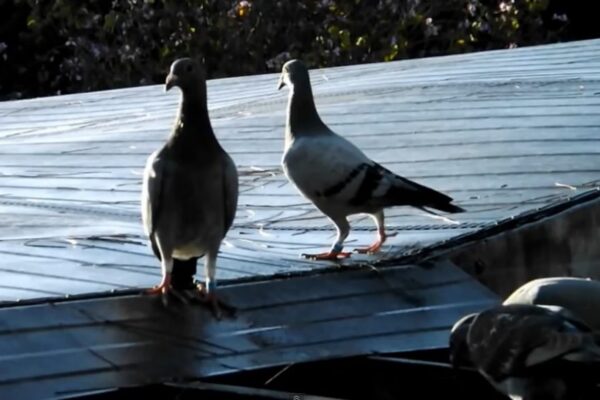
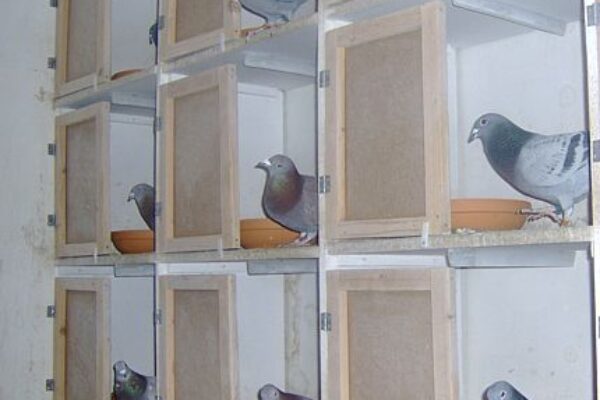
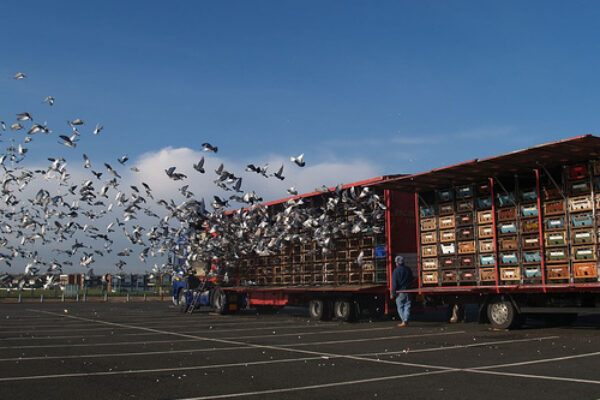
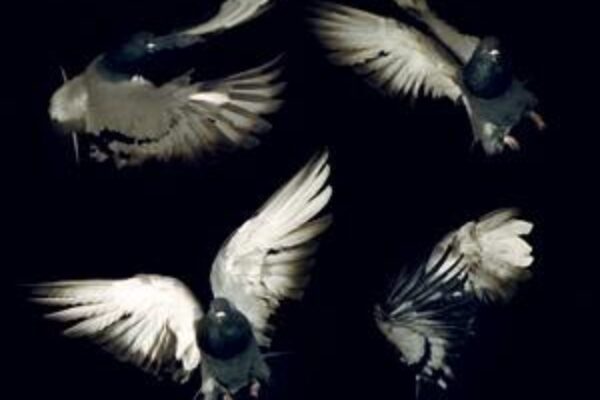

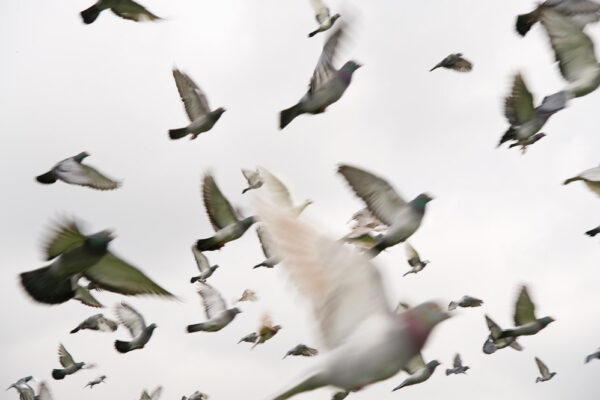


What about the jawbone on the pigeon? I was told if u fell sharp peaks on the jawbone it is a Cock. And if the jawbone is really smooth it is a Hen. U use your thumb & next finger alongside the thumb. Than u pinch the jawbone with these two finger & just gently kinda massage the jawbone & u will feel the difference. what do u guys think?
I USE A NEEDLE ON A PIECE OF COTTON HOLD THE COTTON BY THE END & LET THE NEEDLE HANG OVER THE SQUEAKERS BACK VERY STILL, IT WILL THEN START TO SWING.IF IT GOS ROUND ITS A COCK FROM SIDE TO SIDE ITS A HEN .WORKS EVERY TIME.
hi there,
we’re having race right now and we have 7 laps tournament..where in the 5th laps now and i need youre help. because in this race, were using same bird in all laps and friday were loading the birds to our club and sunday morning they releasing the birds. but what happened is in the 4th lap my bird go home on the next day not on the same day where the birds released.. i want my bird to recover fast because i think he’s sick and very tired. so please help me what to do…thank you very much and im waiting for youre reply…
THANK YOU
Harry you are right works ever time.
put airgun lead pellet on a foot lenght cotton hold over back of pigeon if it swings clock wise it is a cock if it swings from side to side it is an hen
Try it out you will be suprized works for me even on sqeakers